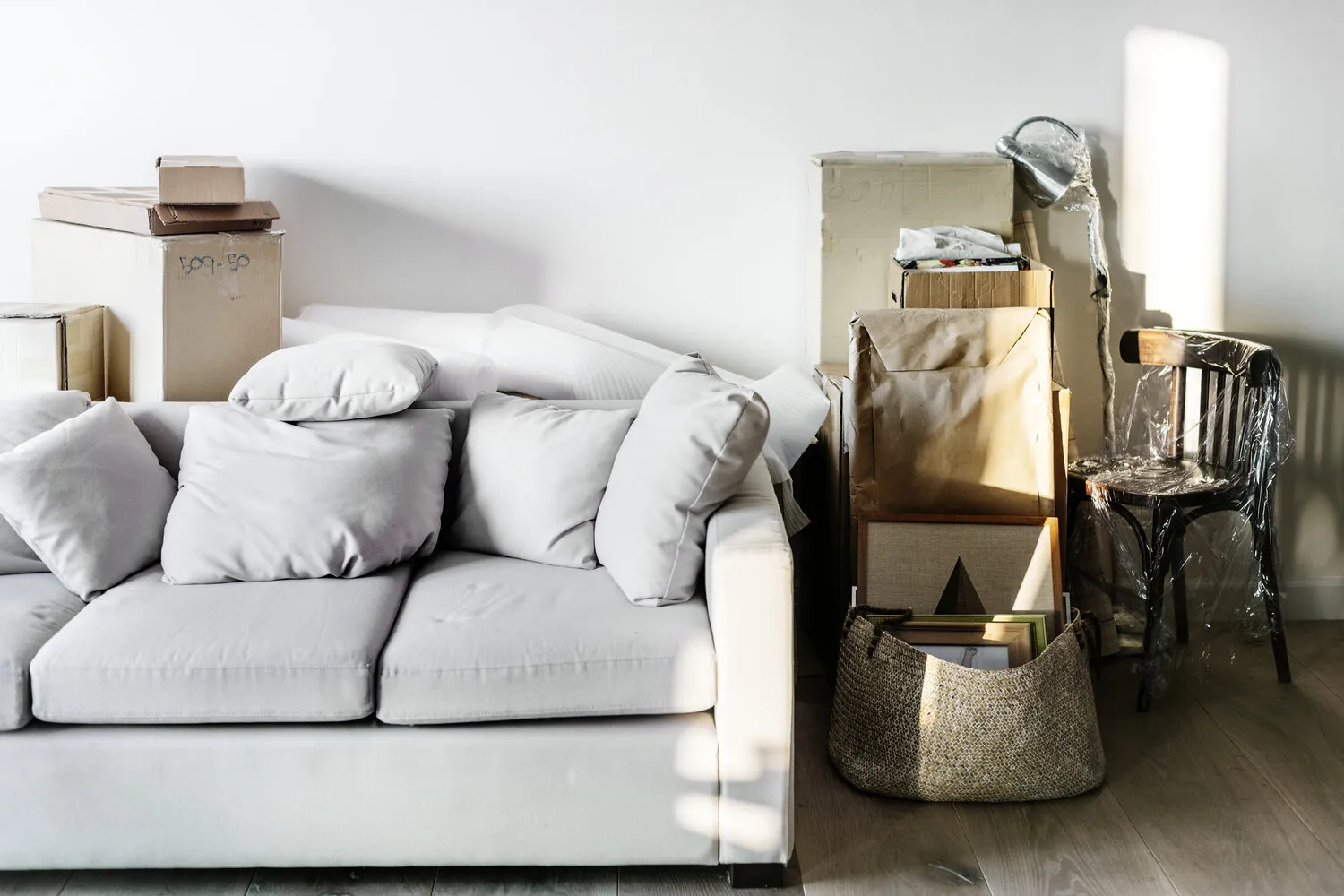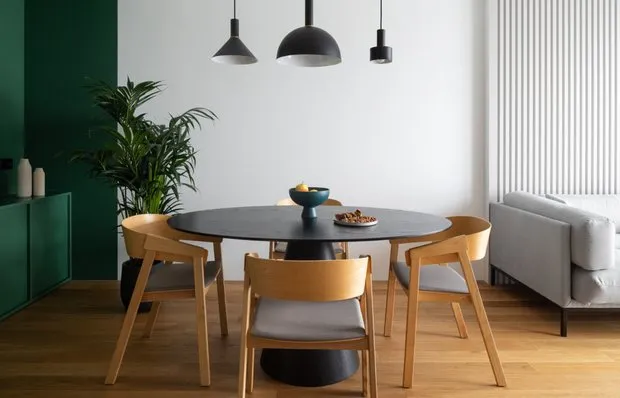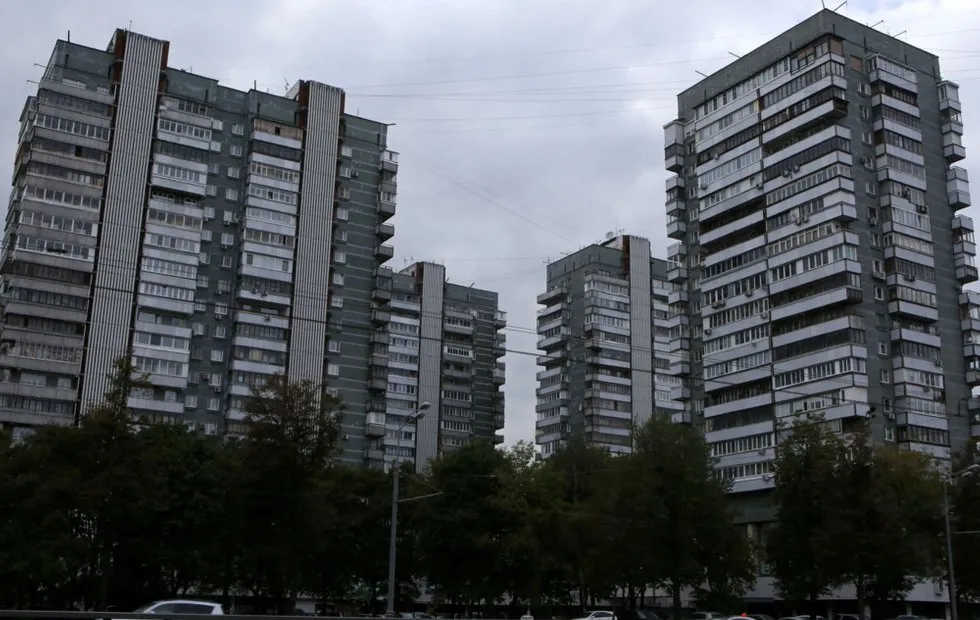There can be your advertisement
300x150
Main Points from Decluttering Courses for 15 Thousand Rubles — Short and Honest
Take note!
Decluttering courses have become a real trend. Space organization gurus charge 5-20 thousand rubles for teaching how to properly get rid of clutter. They promise to change your life, find inner harmony and free up space for happiness. We studied the most popular methods and found out: most 'secrets' are elementary, and the main principles can be mastered in a few minutes.
 Photo from website: freepik.comMain points of the article:
Photo from website: freepik.comMain points of the article:- 80% success in decluttering comes from proper motivation, not technique;
- The main principle of all methods: 'Does this item bring joy?';
- Decluttering is done by categories, not rooms;
- First get rid of obvious clutter, then questionable items;
- Emotional attachment to things is the main obstacle.
On all expensive courses, the first few hours are devoted not to sorting methods, but to working with psychology. Because the main problem is not how to get rid of clutter, but why we accumulate it.
- Most people keep items out of fear. 'What if I need it later?', 'What if I can't find this again?', 'What if I need it in a year?'. This fear paralyzes and prevents getting rid of even obvious trash.
- The second psychological barrier is guilt. 'I spent money and throw it away?', 'It's a gift from my aunt, it's awkward to get rid of it', 'It's an expensive item, I feel sorry'. But keeping unnecessary items doesn't solve the guilt problem but makes it worse.
- The third barrier is nostalgia. Every item is connected with memories. Throwing away a dress means forgetting that evening. But memories are stored in the head, not in the closet.
Courses teach changing your relationship with things: they should serve you, not the other way around.
The Secret #2: The magical question of all methodsAll popular decluttering methods come down to one question: 'Does this item bring me joy?' Take the object in hand and answer honestly.
If an item evokes positive emotions, energizes you — keep it. If indifferent or negative — get rid of it.
But there is a nuance: gurus teach distinguishing between true joy and false attachment. True joy is when the item makes life better right now. False attachment is when you keep it out of a sense of duty, fear or habit.
- Examples of true joy: favorite mug, comfortable pillow, beautiful dress you wear often.
- Examples of false attachment: expensive shoes you never wear, books you don't re-read, electronics you don't use.
Courses thoroughly explain the order in which to sort items. This is more important than it seems.
- Level 1 — obvious clutter: Broken items, empty boxes, old receipts, expired cosmetics, medicines. These are easy to throw away, no emotional attachment.
- Level 2 — clothing: Start with undergarments and socks — less attachment. Then outerwear, shoes. Last of all — dresses and suits for special occasions.
- Level 3 — books: Textbooks, reference guides, books you don't plan to re-read. Keep only those you truly love.
- Level 4 — documents: Old bills, manuals for devices you no longer have, expired documents.
- Level 5 — miscellaneous items: CDs, chargers, cosmetics, kitchen utensils.
- Level 6 — memorabilia: Photos, gifts, souvenirs. The hardest ones are left for last when you already have experience in decision-making.
All courses talk about sorting using three boxes or bags:
- Box 1 — 'Keep' Items you definitely need and that bring joy.
- Box 2 — 'Discard/Sell/Give away' Items you definitely don't need.
- Box 3 — 'Not sure' Items you find hard to decide about.
The main secret: remove the 'not sure' box to the attic or storage for six months. If nothing from it is needed during that time — throw away the entire box without opening.
The Secret #5: The 'one-in-one-out' ruleCourses teach the main rule for maintaining order: every new item must be replaced by an old one.
Bought a new shirt — got rid of the old one. Brought home a souvenir — threw away something from your old knick-knacks.
This prevents future accumulation of clutter. The number of items stays constant, and quality of life improves.
Exceptions are made only for truly necessary replacements for broken items.
The Secret #6: Dealing with 'expensive' itemsA special section on courses is dedicated to expensive things you paid a lot for but don't use.
Gurus explain: money is already spent, it can’t be recovered. Keeping an unnecessary expensive item doesn't make you richer but takes up space and causes guilt.
Options to resolve:
- Sell for any amount (even 20% of the cost);
- Give to someone who will use it;
- Repurpose into something useful;
- Throw away without regrets.
The main thing is to free up space and mind from baggage.
The Secret #7: Emotional triggersCourses thoroughly explain which emotions hinder decluttering:
- Greed: 'It might be useful'. Cured by understanding that unused items are dead weight.
- Fear of poverty: 'If I throw it away, I won't have money for something new'. Cured by awareness that clutter doesn’t protect from poverty.
- Perfectionism: 'I’ll find the perfect use for every item'. Cured by accepting that there is no perfect solution.
- Guilt: 'I can't throw away a gift'. Cured by understanding that the gift has served its purpose when it brought joy to the giver.
Courses honestly say that decluttering is not a one-time event, but a lifestyle.
Every day new items appear: mail, purchases, gifts. If you don't control the flow, clutter will accumulate again.
Daily habits:
- Sort mail immediately, throwing away unnecessary items;
- Avoid impulse purchases;
- Put things back in place immediately after use.
Weekly habits:
- Walk around the house with a trash bag;
- Return items to their places;
- Plan purchases in advance.
Monthly habits:
- Review one closet or drawer;
- Sell or give away accumulated unnecessary items;
- Evaluate new purchases: are they really needed?
Decluttering gurus don’t like to admit that their methods work for everyone. There are people for whom a large number of items is normal and comfortable.
Also, courses say little about how decluttering can become an obsession. Some people start throwing away needed items in pursuit of minimalism.
And most importantly: decluttering doesn't solve deep problems. If you're stressed, spend money on unnecessary purchases or live in toxic relationships — no decluttering will help.
Truthful Conclusion90% of information from expensive courses boils down to simple principles: keep only what's needed, don’t fear getting rid of the unnecessary, and control the flow of new items.
For 15 thousand rubles you'll hear the same thing, just stretched over several days and seasoned with psychological techniques.
If you have motivation and common sense, you can do it yourself. If you need group support and trainer supervision — courses may help. But remember: the main work happens at home, not in a classroom.
Thumbnail from website: freepik.com
More articles:
 How a Designer Completely Redesigned the Layout and Furnished Her 83 m² Apartment
How a Designer Completely Redesigned the Layout and Furnished Her 83 m² Apartment How to Tell if a Plumber Is Scamming You for Money
How to Tell if a Plumber Is Scamming You for Money 7 Secrets of the Film 'Roman Holiday': How the Classic with Audrey Hepburn Was Shot
7 Secrets of the Film 'Roman Holiday': How the Classic with Audrey Hepburn Was Shot Soviet Furniture on 'Avito': How to Tell Treasure from Junk
Soviet Furniture on 'Avito': How to Tell Treasure from Junk Color Map of the House: How to Use 2025 Trends in Each Room
Color Map of the House: How to Use 2025 Trends in Each Room 10 Dining Tables: Trendy Models for Your Interior
10 Dining Tables: Trendy Models for Your Interior Myths or Truth: Secrets of the Strangest Houses in Moscow
Myths or Truth: Secrets of the Strangest Houses in Moscow Interior Design Trends 2025–2026: Key Directions
Interior Design Trends 2025–2026: Key Directions